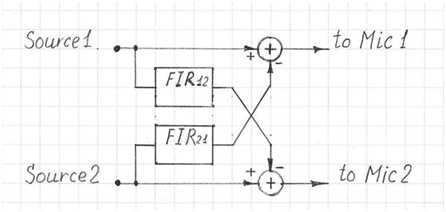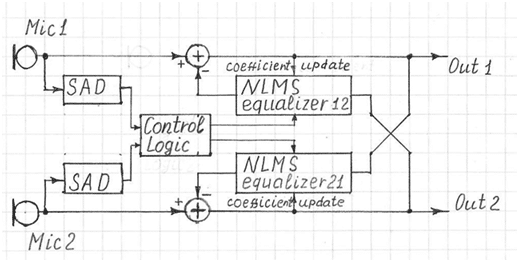Acoustic crosstalk cancellation is an essential part of multi-microphone system. The simplest case is two-microphone system. It is assumed that there are two acoustic sources. Each source is located nearby microphone dedicated for that source.

The first microphone receives a high level of signal 1 and some low level leakage from the source 2. The source 2 could be delayed by propagation amount of time. The second microphone receives a high level of the second source and low level leakage of the first source that could be delayed. Source 1 and source 2 could be both desired signals, or one of them may be the desired signal and another one an interference signal.
In a multipath propagation environment, the leakage for microphone 1 from the second source could be represented as a sum of weighted second source signals with different propagation delays. A similar leakage representation is valid for microphone 2 from the first source. The multipath propagation could be described as FIR filter. A two microphone and two source model is shown in Fig.1.

A Crosstalk Canceller that reduces the mutual leakage and extracts clean signals of the first and second source is illustrated in Fig.2. It is based on two NLMS equalizers that minimize the leakage power from one source to another one and vice versa.
Each of the equalizer coefficient updates is set on and off by its own control signal. Control signals are generated by logic block from the Source Activity Detectors (SAD) signals. SAD estimates the level of the signal at the output of each microphone.